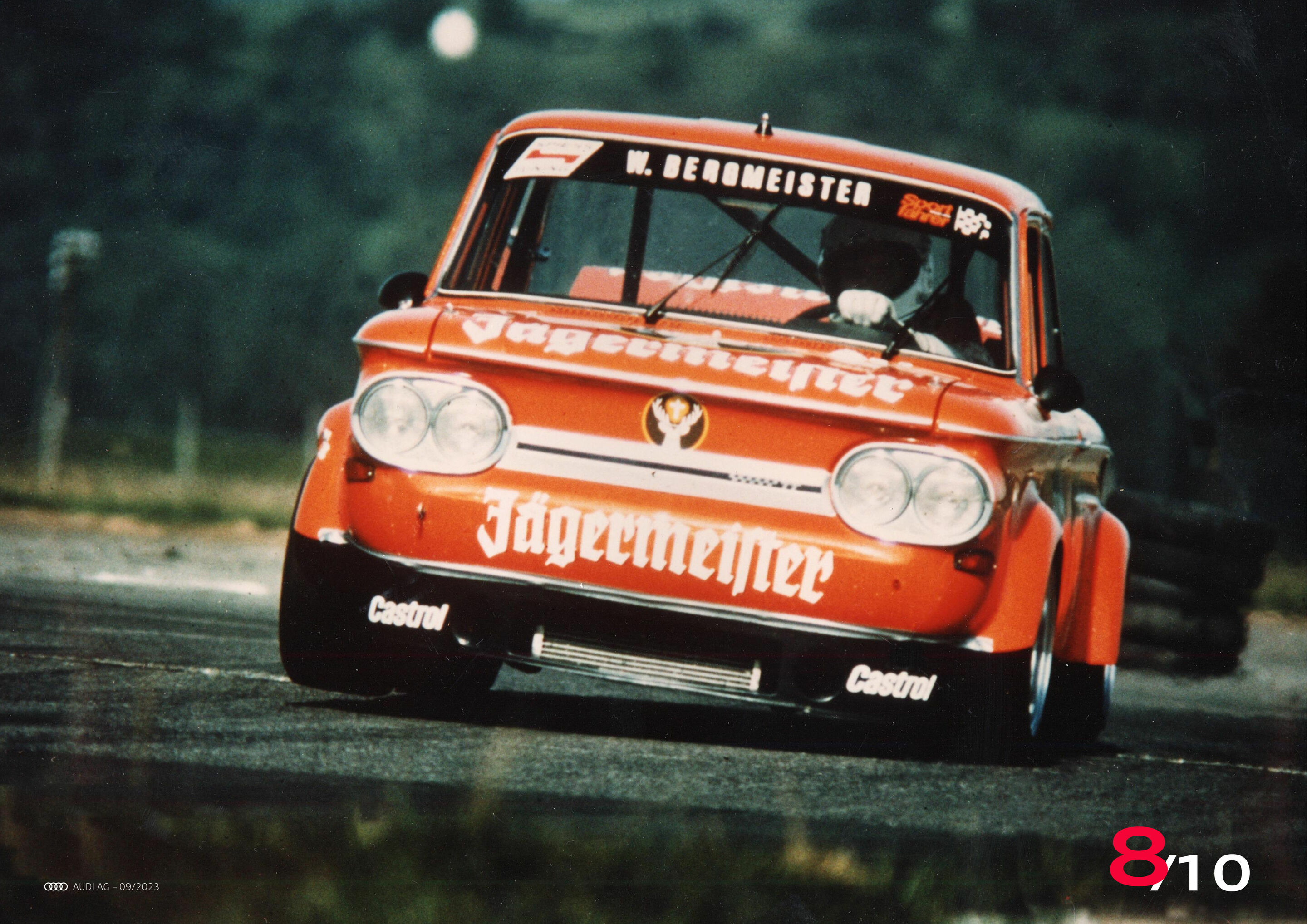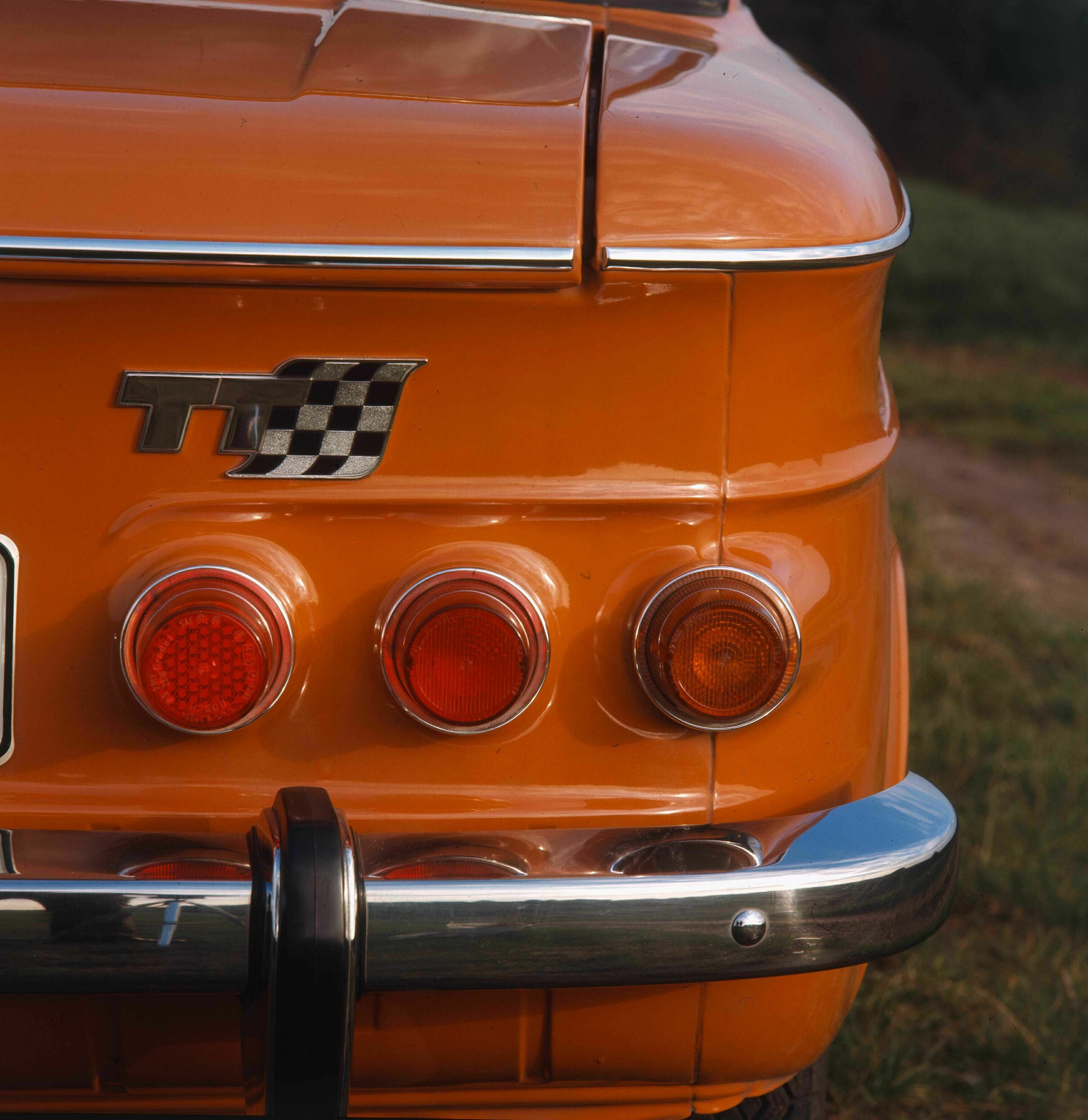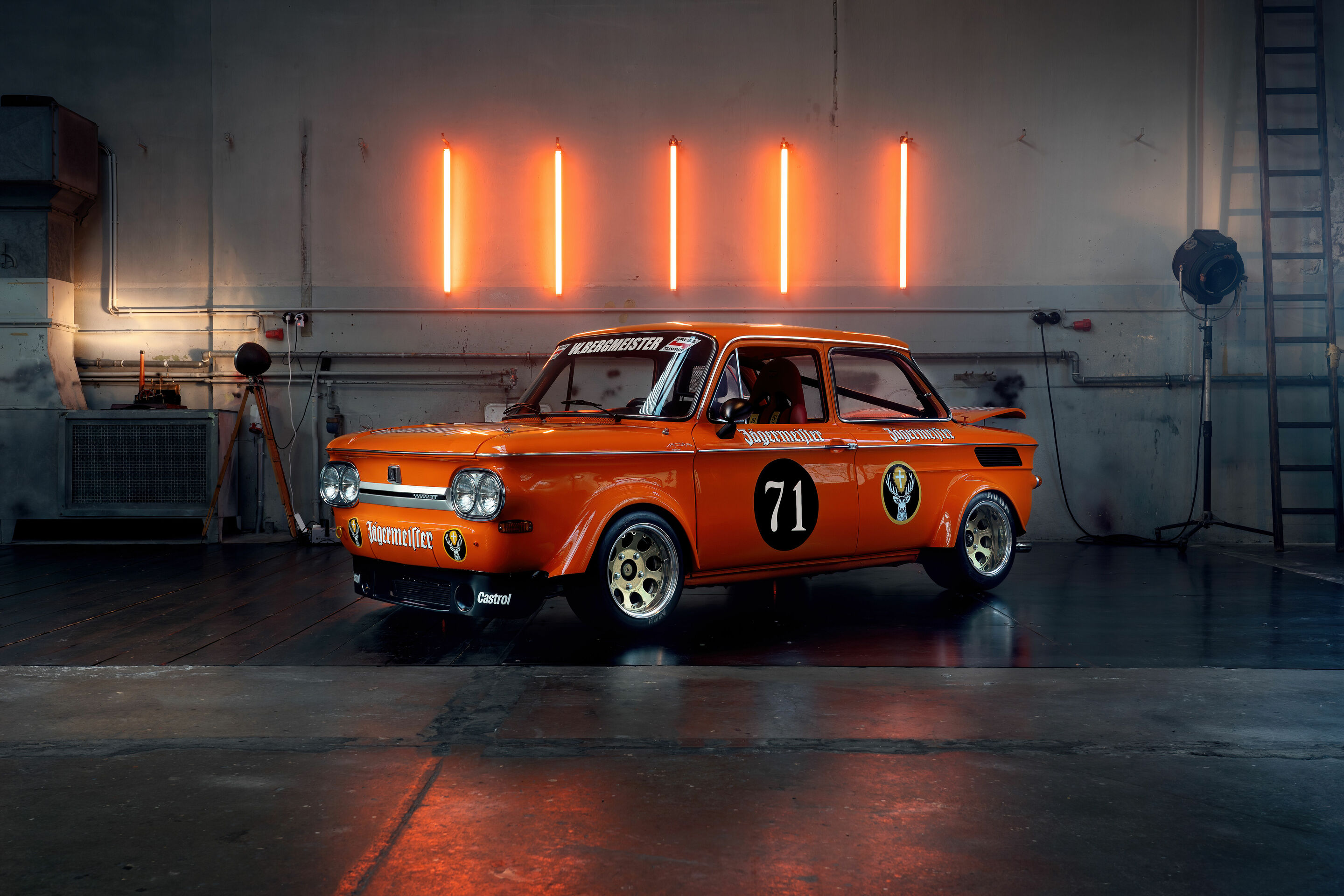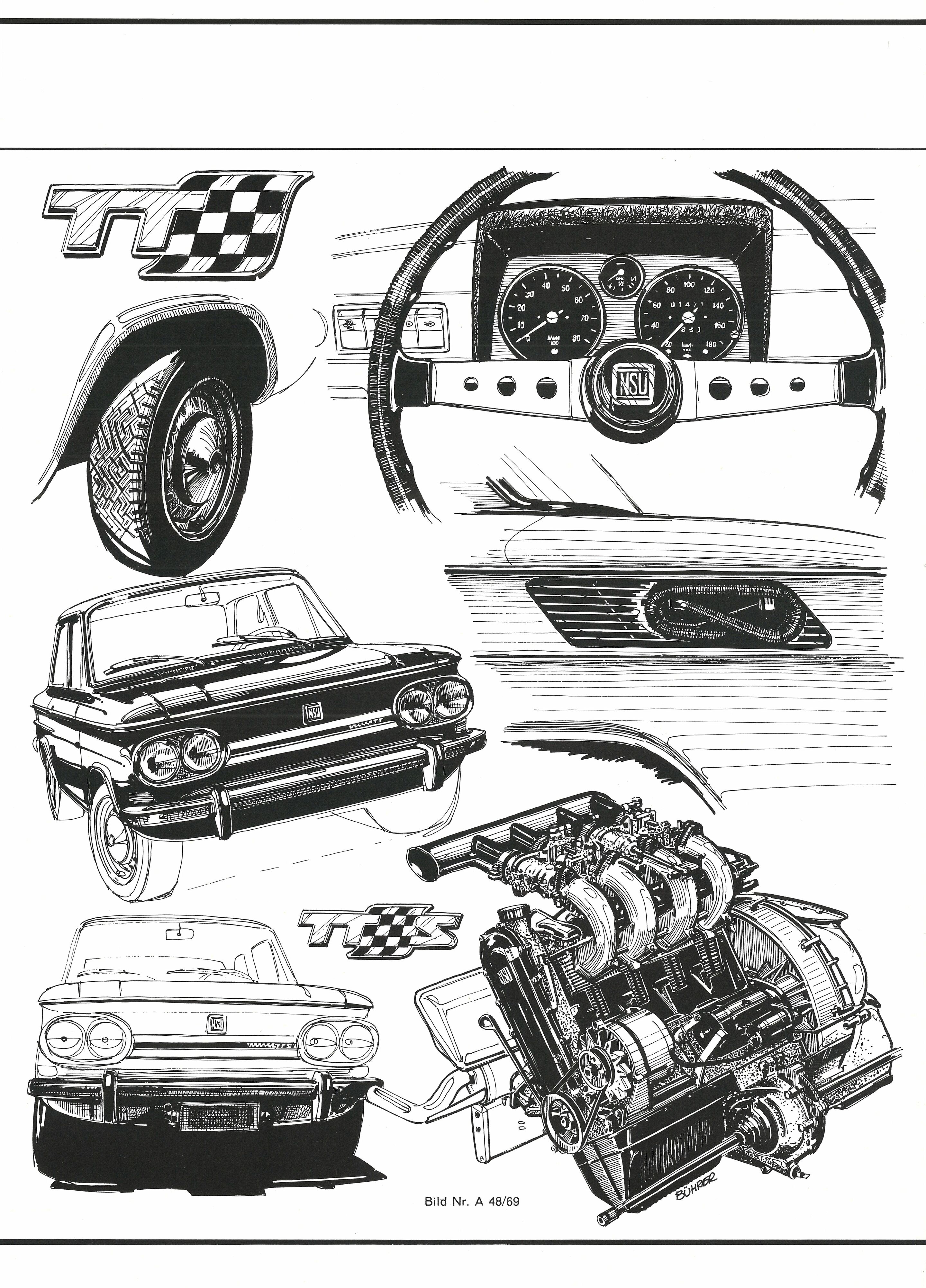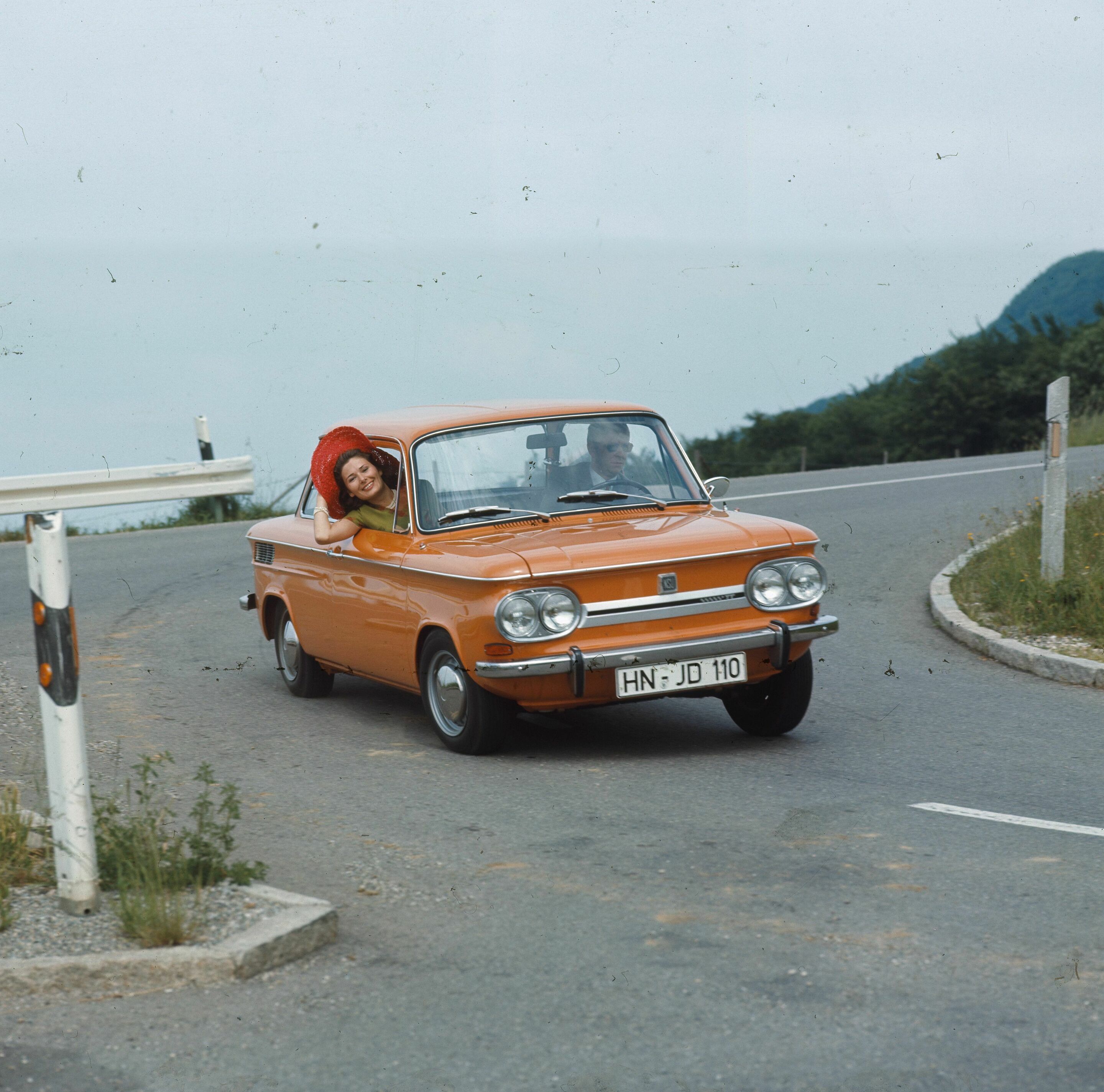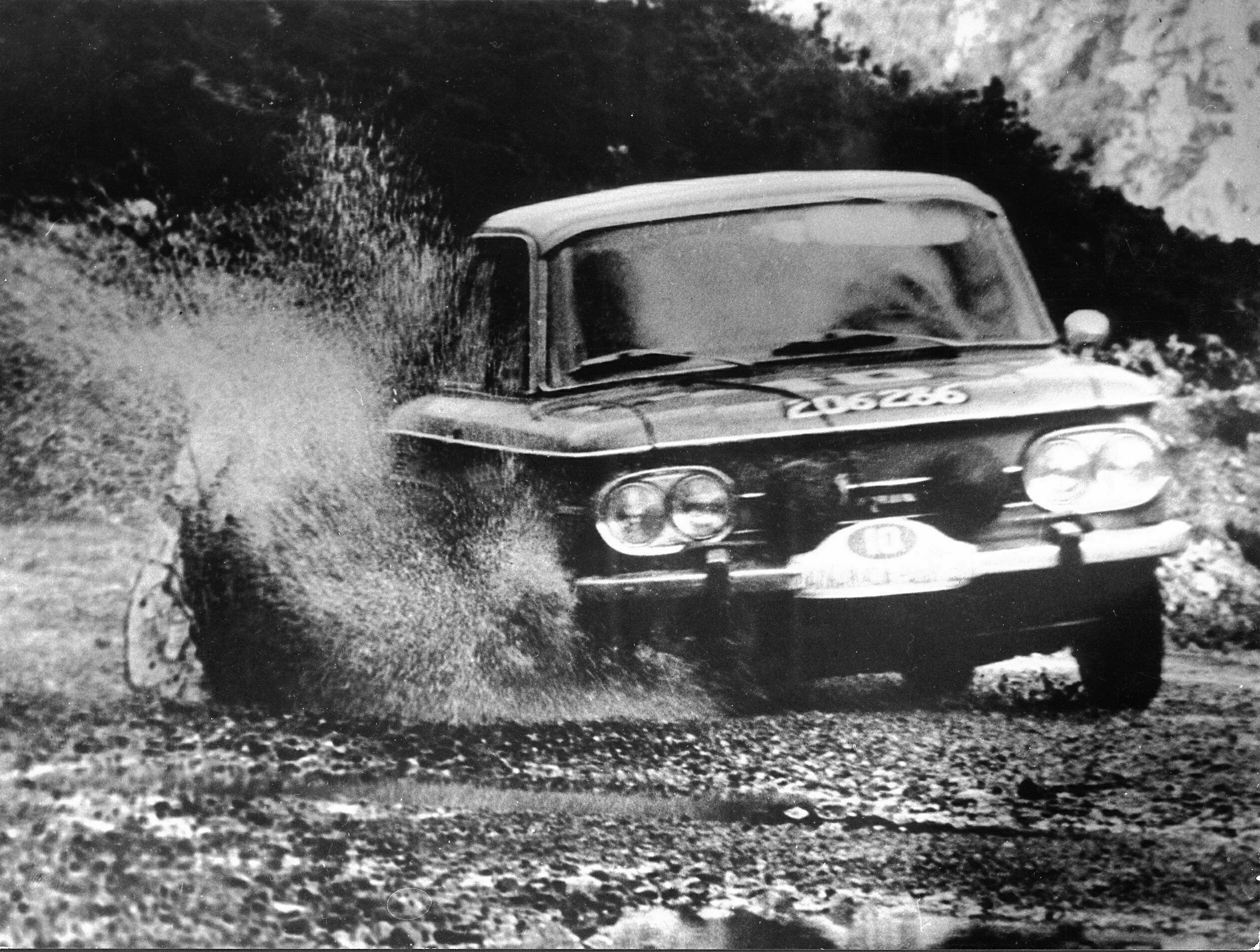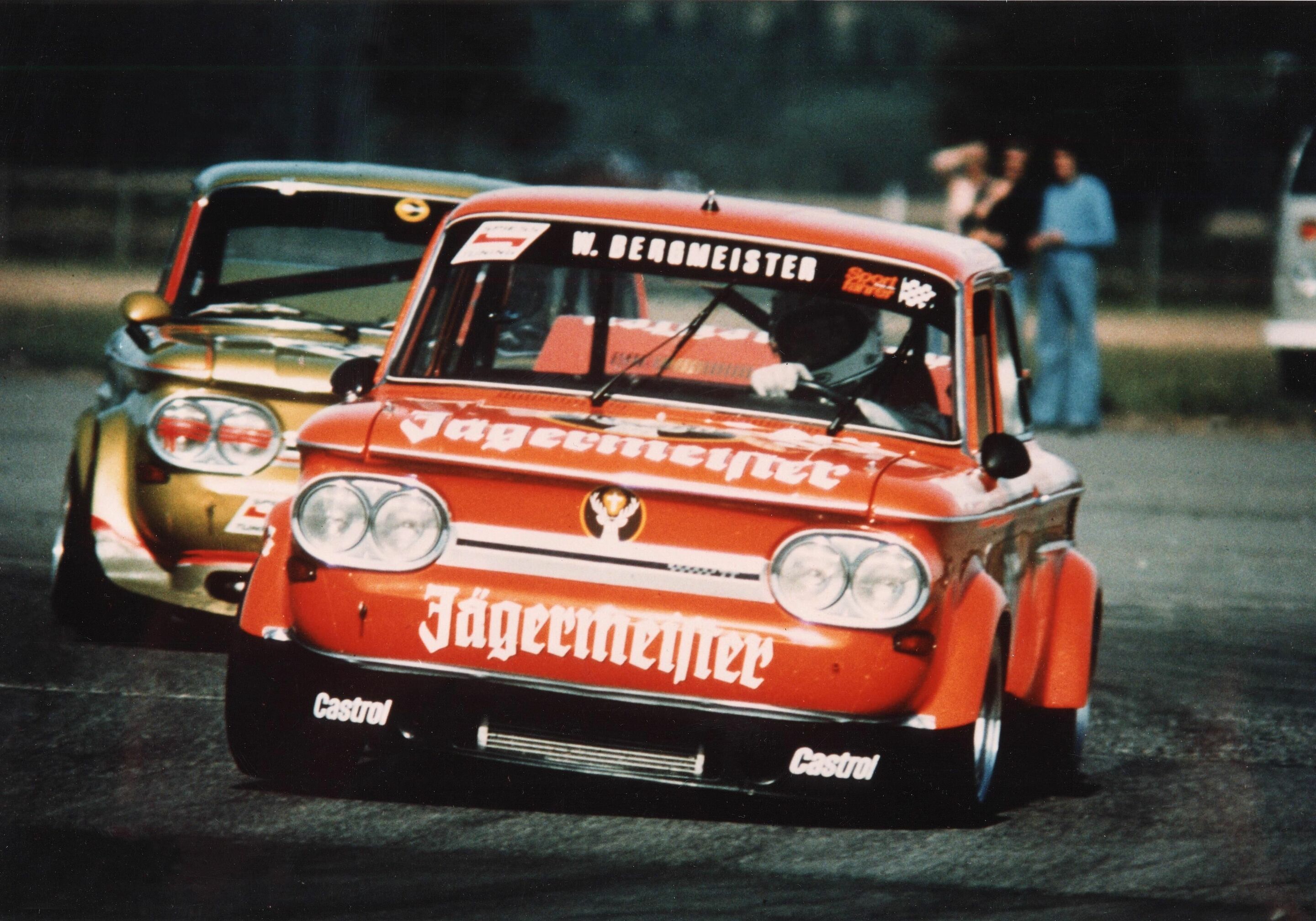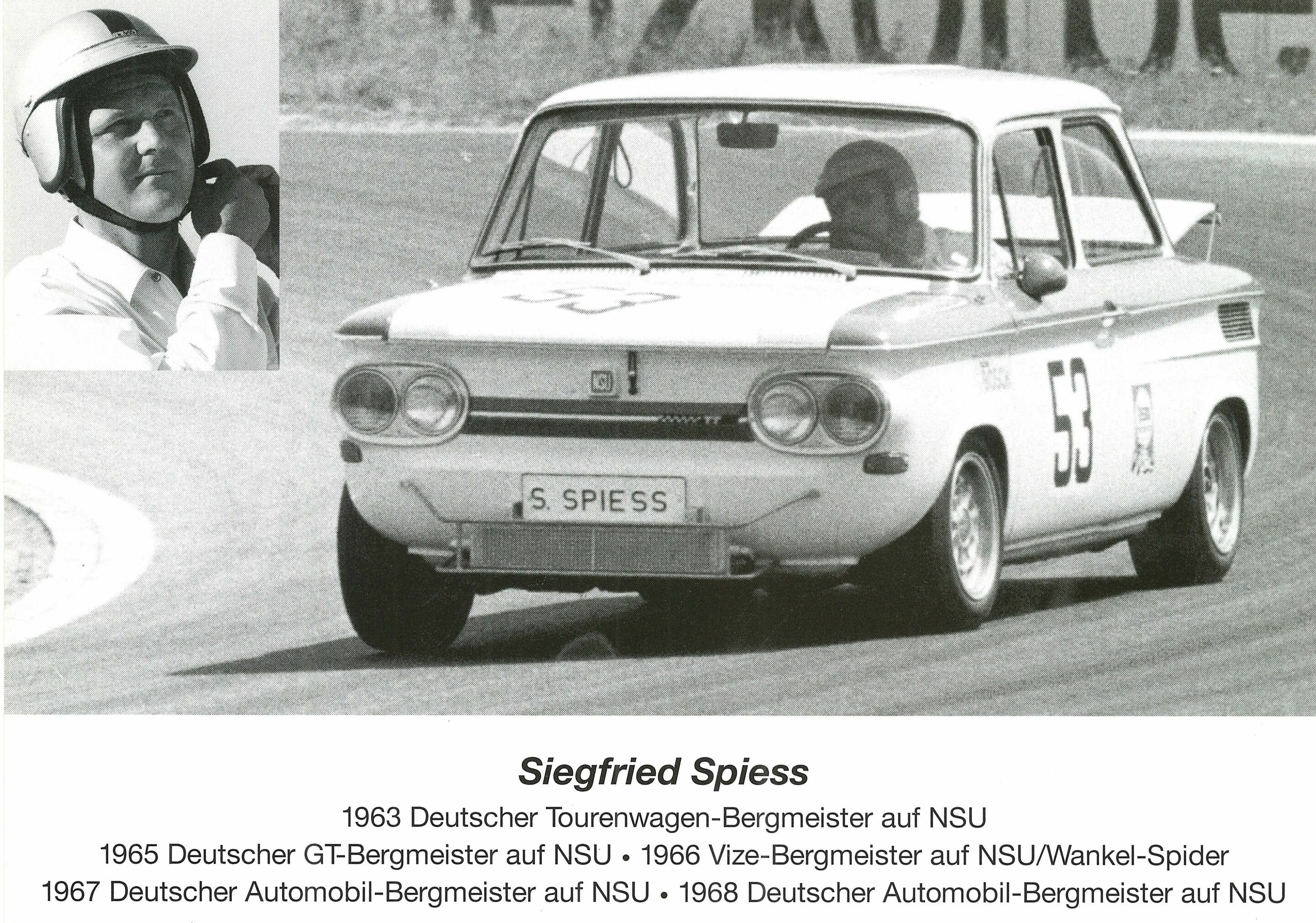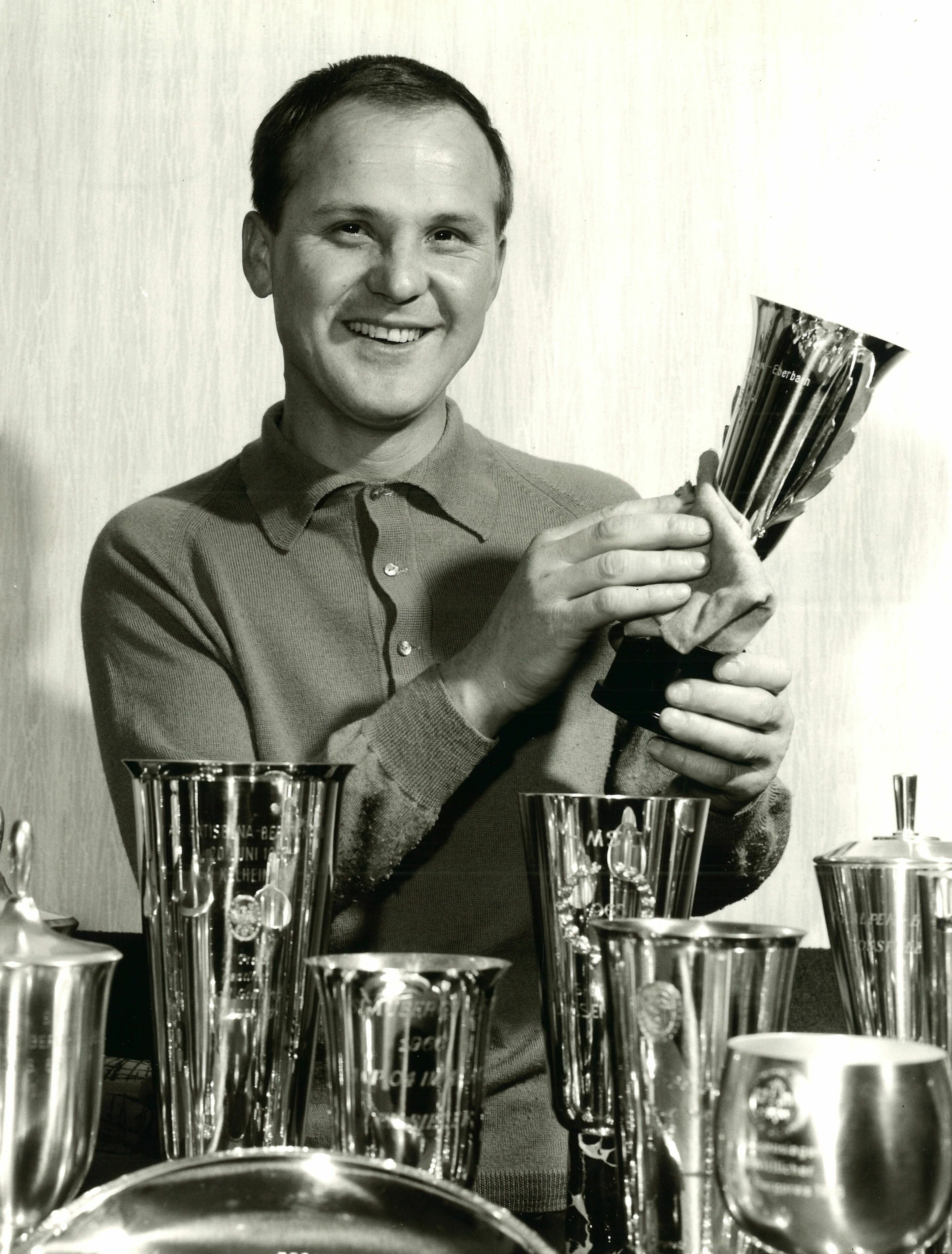A sporty evolution: from the NSU Prinz to Bergmeister
- Victories in motorsport underline the brand’s sportiness
- 150 years of the traditional brand: Series with classics and one-of-a-kinds from NSU’s model history – Episode 8
Siegfried Spiess, Günther Irmscher, or Wilhelm “Willi” Bergmeister – fans of the traditional brand NSU will be familiar with these names. In the 1960s and 1970s, the Neckarsulm-based company offered small but powerful cars for everyday use as well as for sports. First came the NSU Prinz 1000, followed by the NSU TT and the NSU TTS. In this eighth episode of the NSU anniversary series, Audi Tradition makes a foray into this very sporty chapter of NSU history.
At the 1963 IAA, NSU unveiled several new models. In addition to the stylish NSU/Wankel Spider, the NSU Prinz 1000 also made its debut. The small and lively car was well received by both the media and the public, as it offered unprecedented handling in its class due to its exceptional power-to-weight ratio. The new series, with its modern four-cylinder engines, marked NSU’s entry into the mid-size segment. Demand for NSU cars, especially for the new car affectionately called the “Tausender” (German: thousand) by fans, grew – as did the Neckarsulm plant: NSU built a new factory on an area of 10,000 square meters with space for six assembly lines. The first Prinz models rolled off the line in early April 1964, and by the end of the month, NSU dealerships from all over Germany had ordered a total of 1,150 NSU Prinz 1000s from Neckarsulm. From 1964 to 1972, the Neckarsulm-based company made a total of around 195,000 Prinz 1000 L and S and NSU 1000 C units, as well as another 11,500 NSU Prinz 1000 TTs.
The sporty NSU Prinz 1000 ensures a winning streak for Siegfried Spiess
The NSU Prinz 1000 came as standard with a 40 or 43 PS engine, depending on the model version. Later modifications such as an optimized camshaft, Weber carburetors, racing exhaust, and lowered suspension gave the car, which weighed in at only 650 kg (1,400 lb), a top speed of 150 km/h (93 mph), making it competitive on the track and in hill-climbing, which was popular at the time. It was in a Prinz 1000 like this that Siegfried Spiess, who was then just beginning to make a name for himself as an engine specialist and tuner, became the 1965 German GT Bergmeister (German: “mountain champion”) in all classes. Out of eleven races, Spiess finished eight as winner and three as runner-up. Other victories that year included a class win in the Tour d’Europe and an overall win in the Corsica Rally, known as the Rally of 10,000 Curves. If his father had had his way, Spiess should have gone into business. But Spiess never began his apprenticeship as a businessman, instead donning overalls and helping out in the workshop of his parents’ NSU dealership in Stuttgart. Spiess’ winning streak is remarkable: After four championship titles in hill climbing, the engine technician took to the racetrack with an NSU TT he tuned himself. Spiess ended his career as a driver in 1971.
However, he continued to contribute valuable knowledge he gained from racing to the series as well as to other NSU sporting victories.
The NSU TT: the most successful German car in German hill-climbing
In 1967, NSU added two sports versions to its portfolio – the NSU Prinz TT and the even more powerful NSU Prinz TTS. The NSU TT, with a standard output of 65 PS, was built between 1967 and 1972. Both NSU sports sedans, the TT and the TTS, featured the air-cooled four-cylinder engine in the rear. Both had an excellent power-to-weight ratio, making them guaranteed winners in motorsport: In the TT’s debut year in 1967, Günther Irmscher won the Tour d’Europe in an NSU TT, while Bill Allen was the American champion in the South Pacific the following year. For the TTS, NSU set the camber to between slightly negative and neutral and installed sports shock absorbers. Customers who wanted even more sportiness could order the so-called “Speed Set” – but cars equipped with it were only allowed to be used on the racetrack. The Neckarsulm-based company produced 2,400 units of the standard TTS with 1,000 cc displacement and 70 PS from 1967 to 1971. A total of about 50,000 NSU TTs rolled off the line. A particularly powerful representative is now part of AUDI AG’s historic vehicle collection, the NSU TT Jägermeister: With its enlarged displacement, 1,300 Weber carburetors with intake manifold, dual ignition, and enlarged intake and exhaust ports, the car was suitable for private motorsport. Features such as these gave this car a top speed of 190 km/h (118 mph) with an output of 130 PS at 7,800 rpm.
The Latin proverb “nomen est omen” (English: a name is a sign) was true of Wilhelm “Willi” Bergmeister. (In German, Bergmeister literally means “mountain champion”.) The Langenfeld-born owner of an NSU and later of an Audi dealership was active in motorsport from 1968 and was a fixture on the German racing scene from the 1970s. He made hill-climbing history in an NSU TT, winning the German Mountain Cup in 1974 in the “NSU TT Jägermeister.” Headlines ran: “Bergmeister becomes Bergmeister.” Later, he switched to circuit racing, concentrating from 1978 on the European Touring Car Championship, where he finished second in 1979 and won as the 1980 European champion in an Audi 80 GLE.
The NSU TT was the most successful German car in national hill-climbs until the mid-1970s. As a racecar, it won a total of 29 national championships in Europe and North America. These wins in motorsport made for good advertising: The NSU TT, for example, was advertised by Neckarsulm as a “thoroughbred sports car, inch for inch,” the NSU TTS was marketed as a “constant guest at rallies” and a “notorious class winner.”
Each month until December, Audi Tradition is presenting a different NSU model, including brand classics on both two and four wheels, prototypes, and one-of-a-kind models. If you want to delve deeper into the complex product history of the traditional NSU brand, we recommend the Audi Tradition Edition book “NSU-Automobile. Typen – Technik – Modelle”, written by Klaus Arth and published by Delius Klasing Verlag.
